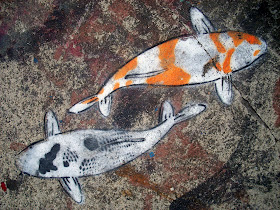
To the San Francisco Museum of Modern Art this afternoon, primarily to see the new photography exhibition Brought to Light : Photography and the Invisible, 1840-1900.
Primeval photographs of blood platelets and urine crystals and body lice. Primeval astronomical photographs. Silvery 19th-century planets.
Photos below from the Museum's permanent collection on the second floor.

An early welded construction by David Smith. In the background is the first Rothko I ever saw in person. That would have been in 1970, long before the museum's present building by Mario Botta was even imagined. As I first knew it, the San Francisco Museum of Modern Art was spread across an awkward, chopped-up space on one floor of the Veteran's Memorial Building in Civic Center. But the Rothko was there, indeed it was, and that fact in itself was more than enough to make the whole unwieldy place seem important.

Above, Giacometti bust. On the walls, two stars of the Bay Area Figurative Movement. Richard Diebenkorn left and David Park right.

Generous swathes of blank wall around each work. That is a good thing.

The museum is particularly proud of several great big paintings by Clyfford Still – partly because so little of his work is available to view anywhere. About 95% of the artist's lifetime output is still owned by the Clyfford Still estate, said to be opening its own museum in Denver in 2010.

The Donald Judd sculpture, a floating monument to minimalism, is always on display, but has moved around to various walls within the galleries half a dozen different times that I can recall. Now it has been sent to live in a corner along with Ad Reinhardt.














































